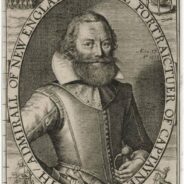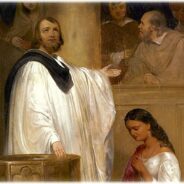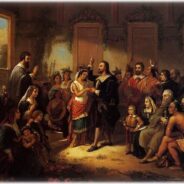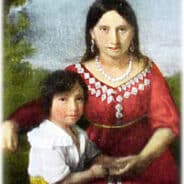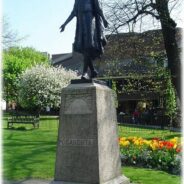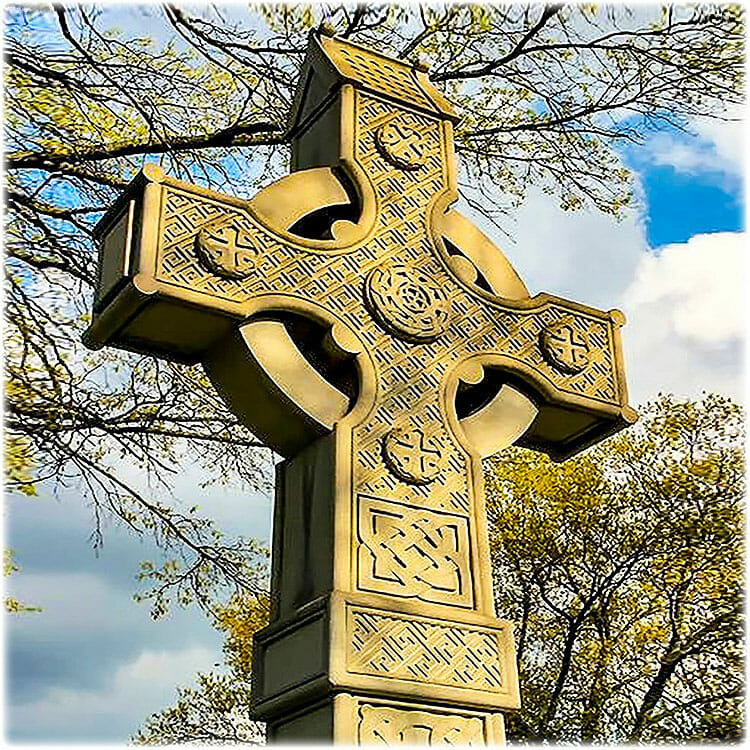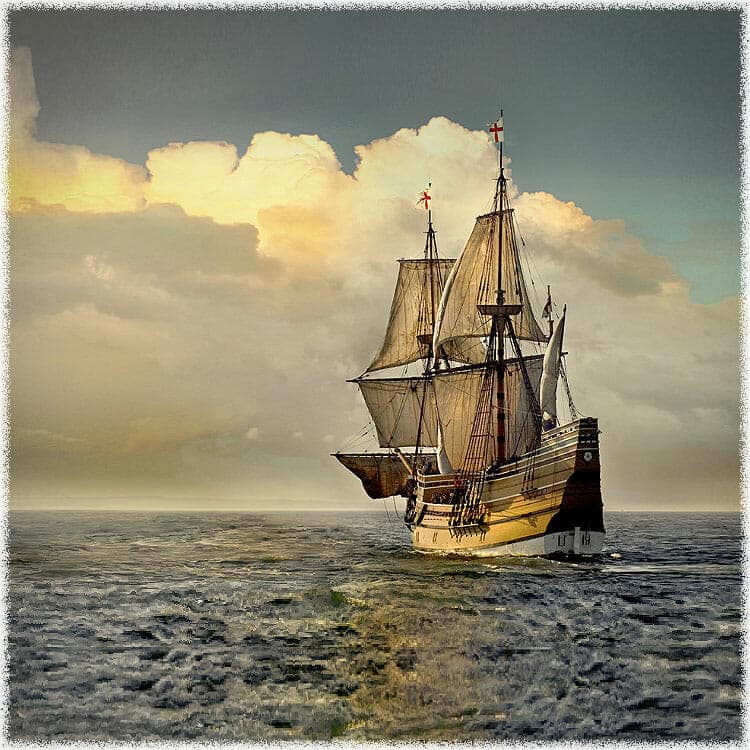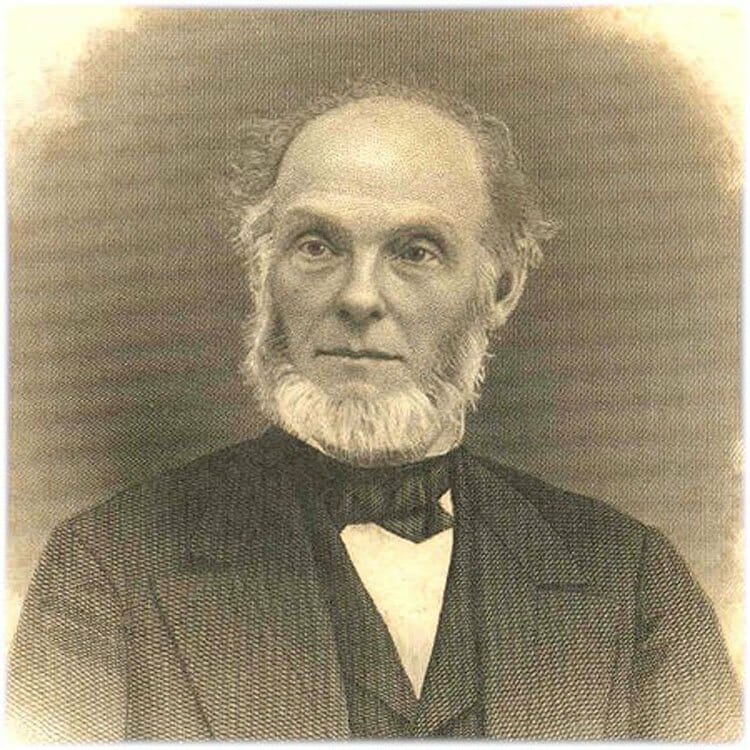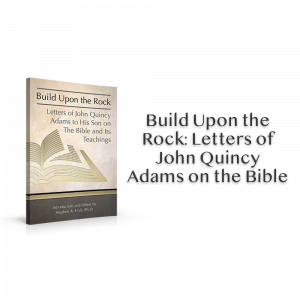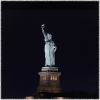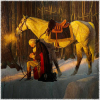Pocahontas’ Pastor
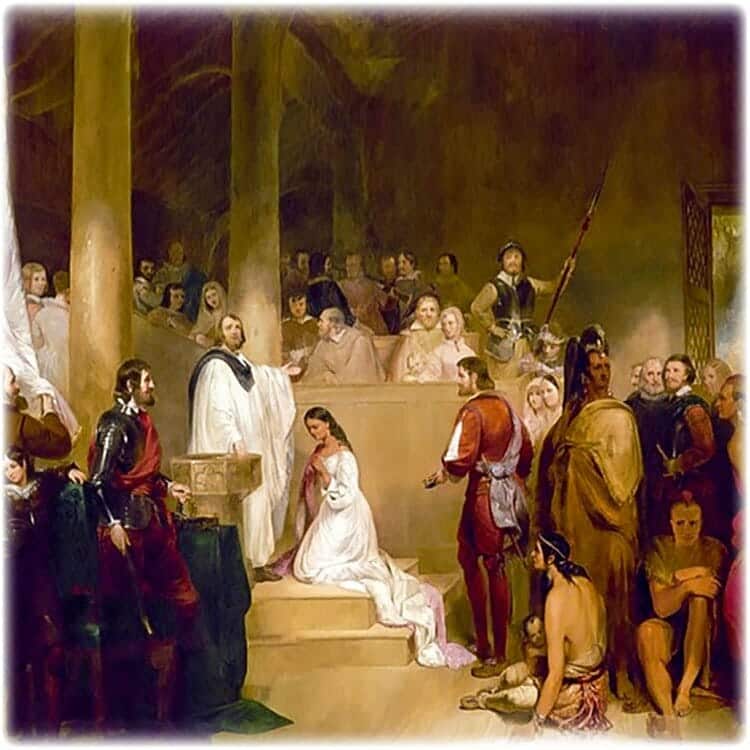
President John Adams indicated that four colonial pastors were responsible for the ideas that birthed the American Republic. The influence of pastors upon the life and development of America, and nations around the globe, is routinely neglected by the irreligious who seek to advance their agenda of secular intolerance against America's Christian heritage. Companies, organizations, and institutions routinely erase pivotal information explaining the influence of Christianity upon the rise and development of America and other nations. Attempts to censor the true influence Christianity has sustained upon America and other parts of the world usually take the form of complete removal of pivotal historical facts or vilifying Christians with false or misleading information. The Christian Crusades are generally the whipping boy of uninformed secularists as a means of shaming and intimidating Christians.
One significant example of the influence of a Christian pastor upon the earliest developments of America is Rev. Alexander Whitaker, pastor to American Indian Princess, Pocahontas. To understand and appreciate his place in American history, his story must be understood within the context of the lives of other important figures.
Article Contents
Captain John Smith and the Jamestown Settlement
On December 20, 1606 Captain John Smith and other colonists set sail for the New World. They had been granted a charter to settle in the New World by King James and had chosen to become involved with the Virginia Company of London's plan to colonize Virginia for profit. Captain Christopher Newport commanded the three ships in which they sailed, while Captain Smith was designated by the Virginia Company as one of the leaders of the new colony.On April 26, 1607, Captain Smith and his fellow colonists landed at what is now Cape Henry, and on May 4 of the following month, they began the construction of the Jamestown settlement. Except for a brief abandonment of this site in 1610, Jamestown served as the capital of the colony for 83 years, from 1616 to 1699.[1] Though Jamestown was not the first English attempt to settle in the New World, it was the first permanent settlement. It was preceded by several earlier settlements that failed, including the Lost Colony of Roanoke, in present-day North Carolina.
When Captain Smith and the Jamestown colonists arrived in the New World, between 14,000 and 21,000 Native American Indians resided in eastern Virginia.[2] At the time Jamestown was settled, various Native American tribes composed the Powhatan[3] or Virginia Algonquian confederation. The leader of the confederation of tribes also bore the name of the tribe and was known as Chief Powhatan. Among his children, was a favored daughter, known as Pocahontas.[4]
Eight months after their arrival, in December 1607, a memorable event occurred that has been recounted over and over in the schoolbooks of American history.[5] While hunting for food along the Chickahominy River, Captain Smith was captured by neighboring Indians and taken to Chief Powhatan at Werowocomoco, the main village of the Powhatan Confederation, about fifteen miles due north of Jamestown. A number of years later, Captain Smith recounted the details of this horrifying experience in a letter to Queen Anne, saying,
That some ten years ago being in Virginia, and taken prisoner by the power of Powhatan their chief King, I received from this great Savage exceeding great courtesies, especially from his son Nantaquaus the most manliest, comeliest, boldest spirit, I ever saw in a Savage, and his sister Pocahontas, the Kings most dear and well-beloved daughter, being but a child of twelve or thirteen years of age, whose compassionate pitiful heart, of my desperate state, gave me much cause to respect her: I being the first Christian this proud King and his grim attendants ever saw: and thus enthralled in their barbarous power, I cannot say I felt the least occasion of want that was in the power of those my mortal foes to prevent, notwithstanding all their threats. After some six weeks fatting amongst those Savage Courtiers, at the minute of my execution, she hazarded [or risked] the beating out of her own brains to save mine, and not only that, but so prevailed with her father, that I was safely conducted to Jamestown . . .[6]
As early as the 1920s, the Christian influence concerning the origin of America has been systematically rewritten. As the above original quote demonstrates, the Christian faith of Captain John Smith was a controlling influence in the way he approached the leadership of the Jamestown settlement. The true history of numerous events, such as Pocahontas and Captain Smith, can only accurately be told if historians are willing to recount the positive Christian influences related to them!
Attempts to deny that Captain Smith was rescued from death by Pocahontas started more than two centuries after Smith's literary record. Whereas contemporary rewriting of America's history occurs at the hands of liberals and secularists, in 1860, on the eve of the Civil War, and following, it was motivated by American writers in the North who sought to deny the South preeminence in the founding of America.[7] But in fact, the arguments that partisans and secularists make against Captain Smith's account are readily answered. For this reason, there should be no doubt concerning the reliability of Captain Smith's account of this event.
If Captain Smith's estimation of Pocahontas's age in the quotation provided above is reasonably accurate, Pocahontas was born about 1595. In late summer 1609 (two years after Smith's rescue), war broke out between the Jamestown settlers and their Indian neighbors[8] that lasted for several years. Not long after hostilities broke out, Captain Smith suffered severe injury to his leg from a gunpowder explosion and returned to England in October 1609 to receive treatment. In his place was sent Captain Samuel Argall, who later captured Pocahontas.
Upon arriving in the New World, the Jamestown settlers were often dependent upon the natives for much needed supplies. Pocahontas was among those who continued to befriend the settlers by supplying them with provisions. With the onset of war with Powhatan, the settlers were forced to look elsewhere for food supplies. Looking for a source of provisions, Captain Argall sailed up the Potomac River in March of 1613 to find the Patawomecks Indians at the village of Passapatanzy. While there, Captain Argall learned that Pocahontas was in the village and had been there for about three months. With the help of Japazaws,[9] the chief of the Patawomecks, Pocahontas was lured on to Captain Argall's ship and taken captive. The Captain's intent was to gain leverage in securing the return of eight colonists who had been taken hostage by the hostile Powhatan. In addition to the hostages, Captain Argall also sought the return of various stolen weapons and farming tools.[10]
The capture of Pocahontas was forever to change her life. The Indian Princess was taken to a new English town founded two years earlier (in 1611), known as Henricus. Here she remained over the next year and was, according to the eyewitness account of one colonists, "very well, and kindly treated."[11]
Pocahontas's Pastor, Alexander Whitaker
Following her capture, Pocahontas was introduced to Rev. Alexander Whitaker, who had come to Virginia in 1611 in the company of Deputy Governor, Sir Thomas Dale. Alexander Whitaker was the son of Dr. William Whitaker who had distinguished himself as professor and Puritan scholar[12] at Cambridge. The son, Alexander, had only been a graduate of Cambridge for five or six years before traveling to Virginia. Following graduation, he ministered in the northern part of England, "where he was held in great esteem," before he was "animated by a missionary spirit"[13] to minister in the New World. The same diligent spirit and assiduous labor that characterized his ministry in England also attended his pastoral care in Virginia, earning him the endearment, "Apostle of Virginia."[14]
When the opportunity to return to her own people arose, Pocahontas chose to remain with the English settlers. Her choice was not unnatural given the fact that she had taken an active interest in the wellbeing of the English settlers as early as 1607 when she spared Captain Smith's life. Lamentably, the narrative of her own life following the decision to remain among the settlers is tragically brief. Though scholars debate the details, several important features immerge that outline the remainder of her life, which include her baptism, marriage, motherhood, and trip to England.
In those eras of Church history when Christian living has been taken most seriously, baptism has been regarded with deep solemnity, symbolizing a transition from a life of sin to a life lived in faithfulness to Jesus Christ. Pocahontas's decision to remain among the English settlers was not merely a cultural or social decision, but more importantly it was a spiritual decision. Seeking to ensure that Pocahontas understood the teachings and expectations of the Christian faith, Deputy Governor Dale helped oversee her instruction and preparation for baptism. Pastor Alexander Whitaker later recounted this fact in a letter, saying,
In those eras of Church history one Pocahontas or Matoa, daughter of Powhatan, . . . after she had openly renounced her country [native] idolatry, confessed the faith of Jesus Christ, and was baptized; which thing Sir Thomas Dale had labored a long time to ground in her.[15]
So important was the baptism of Pocahontas that John Gadsby Chapman was commissioned in 1837 to memorialize it in his painting, "Baptism of Pocahontas."[16] It now hangs in the Rotunda of the United States Capitol.
Soon after her baptism, Pocahontas (who now assumed the Christian name Rebecca) was married to John Rolfe, who had engaged in an active role in the negotiations between the Indians and English settlers. Following her capture, Pocahontas became acquainted with John Rolfe, a farmer who is credited with the first successful cultivation of tobacco as an export crop in the Colony of Virginia. In a little more than a year after her capture, Pocahontas was married to John Rolfe, the details of which have been briefly summarized by one nineteenth-century historian, who wrote:
Mr. John Rolfe, a worthy gentleman, who appears to have been a widower, had been for some time in love with Pocahontas, and she with him; . . . Pocahontas likewise communicated the affair to her brother; so that the report of the marriage soon reached Powhatan, and it proved likewise acceptable to him. Accordingly, within ten days he sent Opachisco, an aged uncle of Pocahontas, and her two brothers, to attend the wedding, and filled his place at the ceremony. The marriage took place early in April 1613[17] . . . and the rites were no doubt performed by the Rev. Mr. Whitaker.[18]
Following their marriage, Pocahontas and John Rolfe lived for two years on Rolfe's plantation of Varina Farms, which was located across the James River from the new community of Henricus. To their union, their son Thomas was born on January 30, 1615, named after Deputy Governor Thomas Dale.[19]
One cannot read the personal letters and accounts recounting the conversion of Pocahontas to Christianity without being convinced of the importance of the Christian faith in the lives of the settlers of Virginia. In fact, one of the primary goals of the Virginia Company of London had long been the conversion of Native Americans to Christianity.[20] Because Pocahontas embodied a token realization of this goal, the Rolfes were invited to England. On June 12, 1616, they arrived at the port of Plymouth. Also traveling with them was with a group of about eleven other Powhatans. Taken by coach to London, they met King James, other nobility, as well as leading figures of the Church of England.
It was Captain Samuel Argall, the man who had captured Pocahontas, who had taken the Rolfes and their entourage to England, and it was Captain Argall who welcomed them aboard his ship in March of 1617 for their return voyage to Virginia.But Captain Argall's ship had not left the Thames River before Pocahontas became gravely ill. She was carried ashore at Gravesend in the shire of Kent where she died suddenly in the arms of John Rolfe of an unknown cause. Her funeral was at St. George's Church on March 21, 1617, where it is believed that she was buried below the church's chancel, a practice reserved for distinguished persons. Her life has been honored with a life-sized statute of her at St. George's Church.
As early as March 1616,[21] Rev. Alexander Whitaker drowned while crossing the James River, only five years after coming to America. History has commonly credited Rev. Alexander with having baptized and solemnized the marriage of Pocahontas to John Rolfe, though some seek to suggest otherwise. John Gadsby Chapman's painting of the baptism of Pocahontas now displayed in the Rotunda of the Capitol Building is a national recognition of the role she played in America's Christian heritage.
For the Virginia Company of London who supported the settlement of Virginia, the advancement or advocacy of Christianity was one of their goals. It is only natural that Pocahontas, the daughter of the chief of the Powhatan Confederacy, was a symbol that the effort to evangelize the Indians of Virginia had reached some of the highest levels of that culture.What is more, the roles that a private company and public officials, such as Deputy Governor Thomas Dale, played in advancing the Gospel of Jesus Christ are highly commendable. As a result of such efforts, America, not just Virginia, was built upon a foundation of Christianity. While Rev. Whitaker and other pastors could be expected to advance the cause of Christ, companies, political figures, and various institutions and agencies also understood that true biblical Christianity was the only safe foundation to erect a nation.May God grant courage to Christians around the world to take a stand for Christ as did Rev. Alexander Whitaker, Deputy Governor Thomas Dale, and the Virginia Company of London!
America deserves to know its true heritage.
Please contribute today!
[1] "Jamestown, Virginia," Wikipedia (http://en.wikipedia.org/wiki/Jamestown,_Virginia, March 19, 2015).
[2] Keith Egloff and Deborah Woodward, First People: The Early Indians of Virginia (Charlottesville, VA: University Press of Virginia, 1992); cf. "Powhatan," Wikipedia (http://en.wikipedia.org/wiki/Powhatan, March 20, 2015).
[3] Powhatan is also spelled Powatan and Powhaten.
[4] Pocahontas was given the name Matoaka at birth and also known as Amonute.
[5] Some scholars doubt that Pocahontas ever rescued Captain Smith; they believe Smith contrived it in a letter commending Pocahontas to Queen Anne. However, Professor J. A. Leo Lemay of the University of Delaware points out the difference between Smith's earlier records and his letter to Queen Anne written some years later. See J. A. Leo Lemay, Did Pocahontas Save Captain John Smith? (Athens, Georgia: The University of Georgia Press, 1992), 25. For a fuller discussion of this issue, "John Smith (explorer)," Wikipedia (en.wikipedia.org/wiki/John_Smith_(explorer), March 19, 2015).
[6] Orthography of this quotation has been updated. John Smith, The Generall Historie of Virginia, New-England, and the Summer Isles: With the Names of the Adventurers, Planters, and Governours From Their First Beginning, Ano: 1584. To This Present 1624. With the Procedings of Those Severall Colonies and the Accidents That Befell Them in All Their Journyes and Discoveries. Also the Maps and Descriptions of All Those Countryes, Their Commodities, People, Government, Customes, and Religion Yet Knowne. Divided Into Sixe Bookes. By Captaine Iohn Smith, Sometymes Governour in Those Countryes & Admirall of New England (London: Printed by I.D. and I.H. for Michael Sparkes, 1624), 121.
[7] For a discussion of prominent figures involved in this debates, see "John Smith (explorer)," Wikipedia (http://en.wikipedia.org/wiki/John_Smith_(explorer), March 21, 2015).
[8] This was known as the First Anglo-Powhatan War.
[9] Also known as "weroance Iopassus."
[10] "Samuel Argall," Wikipedia (http://en.wikipedia.org/wiki/Samuel_Argall, March 21, 2015).
[11] Ralph Hamor, A True Discourse of the Present State of Virginia (Richmond: Virginia State Library, 1957), 6. Orthography updated. Also see Charles Campbell, History of the Colony and Ancient Dominion of Virginia (Philadelphia: J.B. Lippincott and Co., 1860.), 108.
[12] Dr. Whitaker helped to frame the Calvinistic Lambeth Articles. Charles Campbell, History of the Colony and Ancient Dominion of Virginia (Philadelphia: J.B. Lippincott and Co., 1860.), 106.
[13] Charles Campbell, History of the Colony and Ancient Dominion of Virginia (Philadelphia: J.B. Lippincott and Co., 1860.), 107.
[14] Charles Campbell, History of the Colony and Ancient Dominion of Virginia (Philadelphia: J.B. Lippincott and Co., 1860.), 106.
[15] Governor Dale celebrated Pocahontas's baptism in a letter: " Powhatan's daughter I caused to be carefully instructed in [the] Christian Religion, who after she had made some good progress therein, renounced publicly her country [native] idolatry, openly confessed her Christian faith, [and] was, as she desired, baptized . . . Ralph Hamor, A True Discourse of the Present State of Virginia (Richmond: Virginia State Library, 1957), 55, 59-60.
[16] "Baptism of Pocahontas," Architect of the Capitol (http://www.aoc.gov/capitol-hill/historic-rotunda-paintings/baptism-pocahontas, March 25, 2015).
[17] Thought Charles Campbell places the marriage at Jamestown, some historians insist that the place of marriage is unknown. Henricus is one of the possibilities given the fact that it is here that she was held and that Rev. Whitaker ministered here.
[18] Charles Campbell, History of the Colony and Ancient Dominion of Virginia (Philadelphia: J.B. Lippincott and Co., 1860.), 109.It is significant to note that while various sources attribute the baptism and marriage of Pocahontas to Rev. Whitaker, no absolute proof exists to support this. See The Virginia Magazine of History and Biography. ed. William G. Standard. Richmond: Wm. Ellis Jones, 1893. Vol 11:147-148.
[19] "Thomas Rolfe," Wikipedia (http://en.wikipedia.org/wiki/Thomas_Rolfe, March 26, 2015).
[20] "Pocahontas," Wikipedia (http://en.wikipedia.org/wiki/Pocahontas, March 25, 2015).
[21] The exact date of his death is not known. Some date his death as late as 1617.

